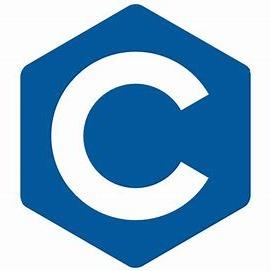c语言数据结构是指将数据按照一定的方式组织和存储的方法。它是计算机科学中的重要概念,用来描述和解决实际问题中的数据组织和处理问题。数据结构可以分为线性结构和非线性结构。线性结构包括数组、链表、堆栈和队列等,而非线性结构包括树和图等。

C语言是一种通用的、面向过程的编程语言,它广泛应用于系统软件开发和嵌入式系统中。虽然C语言本身没有直接支持数据结构的特定语法和数据类型,但它提供了丰富的语法和功能,可以用来构建各种数据结构和算法。
数据结构是指将数据按照一定的方式组织和存储的方法。它是计算机科学中的重要概念,用来描述和解决实际问题中的数据组织和处理问题。数据结构可以分为线性结构和非线性结构。线性结构包括数组、链表、堆栈和队列等,而非线性结构包括树和图等。
在C语言中,可以通过使用结构体来定义自定义的数据结构。结构体是一种用户定义的数据类型,它允许我们将不同类型的数据聚集在一起,并以一种自定义的方式组织和访问这些数据。
例如,我们可以使用结构体来定义一个表示学生的数据结构:
立即学习“C语言免费学习笔记(深入)”;
struct Student {
char name[50];
int age;
float score;
};上面的代码定义了一个名为Student的结构体,它包含三个成员变量name、age和score,分别表示学生的姓名、年龄和分数。
在C语言中,我们可以通过点操作符来访问结构体的成员变量。例如,我们可以使用下面的代码来创建一个名为stu的学生对象,并给它赋值:
struct Student stu; strcpy(stu.name, "John"); stu.age = 20; stu.score = 90.5;
通过结构体,我们可以将相关的数据封装在一起,并以一种更高层次的方式进行组织和操作。这样可以让我们的代码更加清晰、模块化和易于维护。
除了结构体,C语言还提供了一些用于存储和管理数据的标准库函数,如malloc、realloc和free等。这些函数可以用来动态地分配和释放内存,从而实现动态数据结构,如链表和树等。
链表是一种常见的非线性数据结构,它由一个个节点组成,每个节点包含一个数据元素和指向下一个节点的指针。在C语言中,我们可以使用malloc函数动态地分配内存来创建节点,并使用指针来连接它们。
例如,下面的代码定义了一个简单的链表,并实现了插入和删除节点的功能:
struct Node {
int data;
struct Node* next;
};
void insertNode(struct Node** head, int value) {
struct Node* newNode = (struct Node*)malloc(sizeof(struct Node));
newNode->data = value;
newNode->next = NULL;
if (*head == NULL) {
*head = newNode;
} else {
struct Node* current = *head;
while (current->next != NULL) {
current = current->next;
}
current->next = newNode;
}
}
void deleteNode(struct Node** head, int value) {
struct Node* current = *head;
struct Node* prev = NULL;
while (current != NULL && current->data != value) {
prev = current;
current = current->next;
}
if (current != NULL) {
if (prev == NULL) {
*head = (*head)->next;
} else {
prev->next = current->next;
}
free(current);
}
}以上的代码演示了在C语言中如何通过使用结构体和指针来实现链表的插入和删除操作。
总的来说,C语言提供了丰富的语法和功能,使我们能够自定义和操作各种数据结构。它的简洁性和灵活性使得它成为一种广泛应用于数据结构和算法实现的编程语言之一。为了更好地利用C语言的数据结构特性,我们需要熟悉C语言的基本语法和标准库函数,并将它们应用于实际问题的解决中。
以上就是c语言数据结构是什么的详细内容,更多请关注php中文网其它相关文章!

C语言怎么学习?C语言怎么入门?C语言在哪学?C语言怎么学才快?不用担心,这里为大家提供了C语言速学教程(入门到精通),有需要的小伙伴保存下载就能学习啦!

Copyright 2014-2025 //m.sbmmt.com/ All Rights Reserved | php.cn | 湘ICP备2023035733号